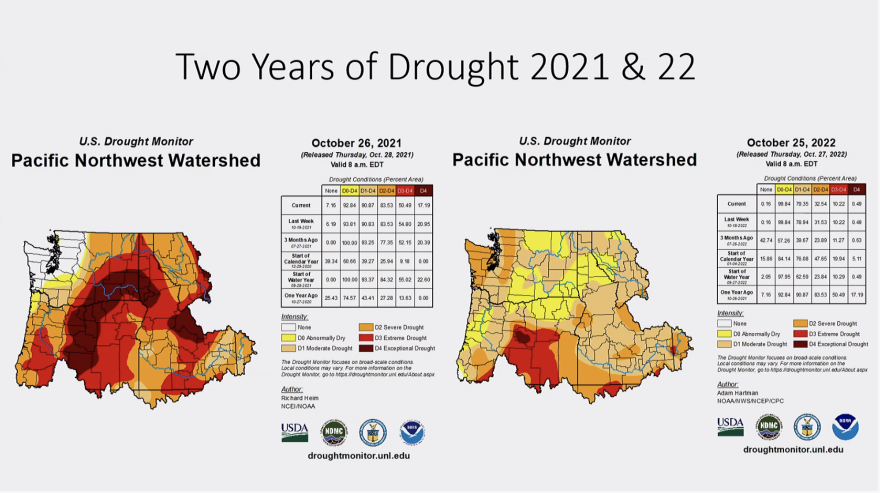It’s about a month or two before snow in the mountains will start melting, and Idaho’s water forecasters are hoping for more precipitation before then.
Most of the state is in the "moderate" drought category. David Hoekema, a hydrologist with the Department of Water Resources said that’s an improvement, but conditions are still slowly recovering from an extreme drought two years ago.
“We haven’t seen a spring that dry since 1924," Hoekema said of the spring in 2021 at a water supply outlook meeting on Tuesday.
Snow accumulating at higher elevations this year is about average, or slightly above that, even after a dry January. However, the northern part of the state remains drier than the southern part.
Still, decent snowpack might not translate to as much water flowing to rivers and reservoirs this spring, said Erin Whorton a water supply specialist with the Natural Resources Conservation Service.
“I find myself in a little bit of a dilemma because the snowpack, overall, looks really good," she said. "But I think because we’ve had a couple of dry years, I don’t feel as much optimism.”
One reason for her hesitation is dry soils from extended drought. That means the ground still needs to soak up the moisture it can get; sometimes, that's instead of sending it downstream.
Moreover, most reservoirs in the state have below-normal water levels right now. The outlier is Anderson Ranch on the Boise River, which has above-normal water in storage.
Find reporter Rachel Cohen on Twitter @racheld_cohen
Copyright 2023 Boise State Public Radio



